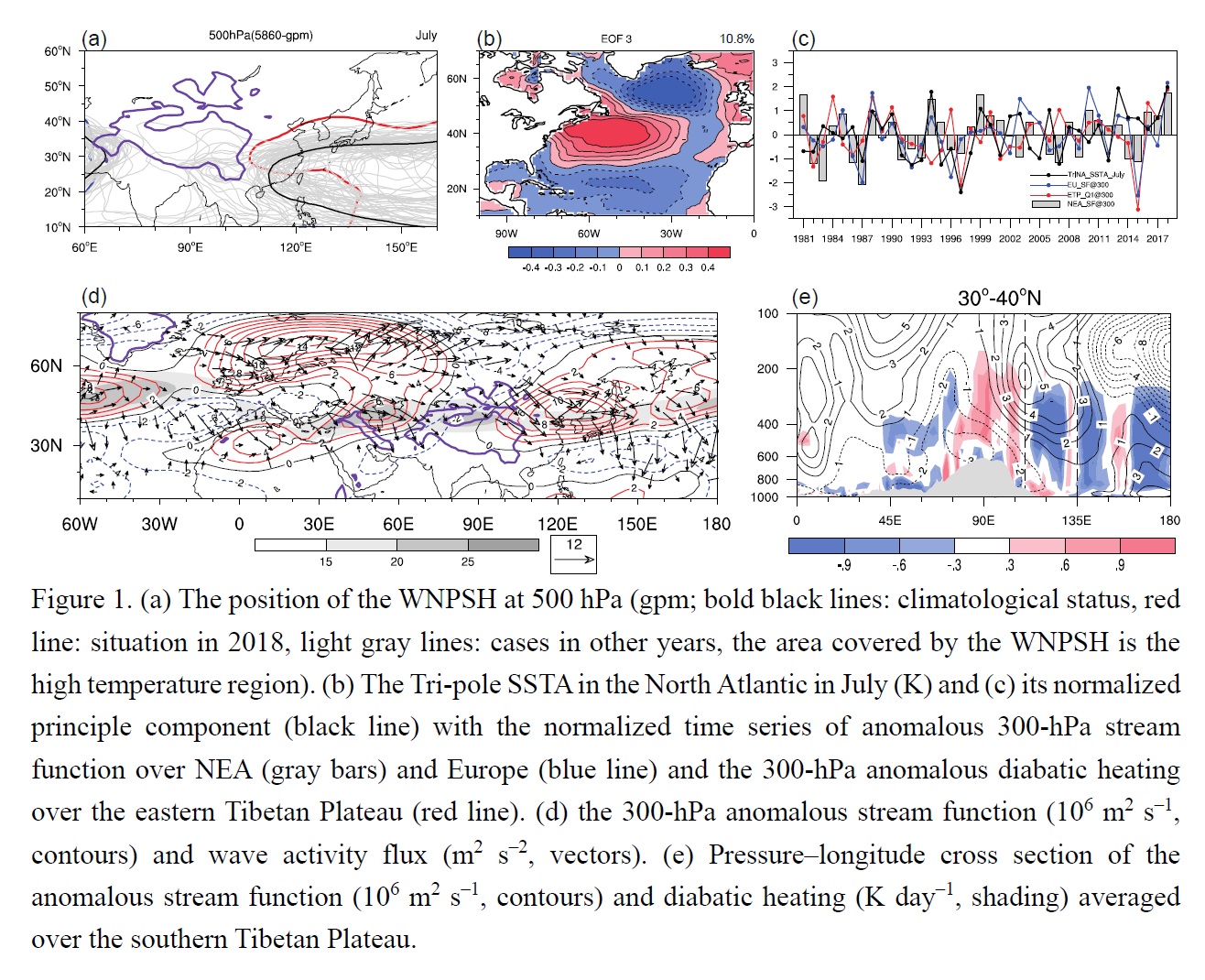JMSJ Highlights
Liu et al. (2019)
Liu, B., C. Zhu, J. Su, S. Ma, and K. Xu, 2019: Record-breaking northward shift of the western North Pacific Subtropical High in July 2018. J. Meteor. Soc. Japan, 97,
https://doi.org/10.2151/jmsj.2019-047.
Special Edition on Extreme Rainfall Events in 2017 and 2018
Graphical Abstract with highlights
Overview:
Extreme heat waves attacked the Northern Hemisphere in boreal summer of 2018, and killed more
than 80 people in South Japan in July. Here we found the record-breaking northward shift of the
western North Pacific subtropical high (WNPSH) is the murder of the heat waves in Japan. The
WNPSH, a cloud-free anticyclone with descending motion in the East Asian summer monsoon, moves
extremely northward and dominates Northeast Asia, and finally produce the local heat waves in south
Japan in July 2018. The anomalous WNPSH in this July is mainly affected by the mid-latitudinal wavetrain,
induced by the sea surface temperature anomalies (SSTAs) in the North Atlantic.
The data analysis based on the JRA-55 reanalysis indicates that the northern edge of the WNPSH reaches 40°N in July 2018 and break its historical record since 1958, corresponding to the northward extension of the high temperature region over Japan (Fig. 1a). The positive tri-pole SSTA pattern in the North Atlantic reaches its peak in July 2018, and caused the record-breaking northward shift of the WNPSH (Figs. 1b and 1c). This SSTA could firstly excite an eastward-propagating wave-train with a series of anomalous circulation in mid-high latitude over Eurasian continent (Fig. 1d). The anticyclonic nodes settle over the Europe and Northeast Asia, while the cyclonic node is centered over the Siberia (Fig. 1d). The anomalous anticyclone over Northeast Asia favors the northward shift of the WNPSH and the heat waves over Japan.
On the other hand, the anomalous cyclone is intruding southwards towards the Tibetan Plateau during its eastward propagation. When it encounters the western Tibetan Plateau, the air flow is uplifted by the large topography, leading to the stronger atmospheric heat source related to the condensation heating released by summer rainfall over the platform of the Tibetan Plateau (Fig. 1e). Another wavetrain in the subtropics is simulated around the Tibetan Plateau with its anticyclonic node appearing over Northeast Asia, which results in the further northward shift of the WNPSH.
Our findings indicate the importance of the SSTAs in the North Atlantic for the climate anomalies over East Asia. Although the physical processes can be validated by the numerical experiments of the atmospheric general circulation model, the model results suggest a larger uncertainty of the atmospheric response to the extra-tropical SSTAs comparing with the ENSO events. It will increase the risk of failure in the seasonal prediction of summer climate over East Asia.







